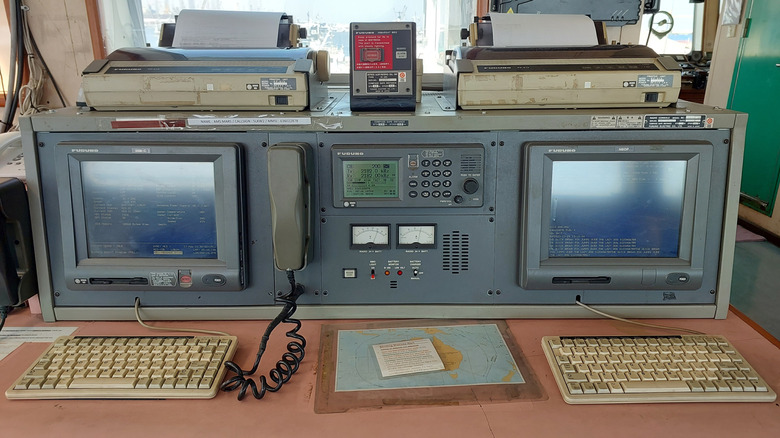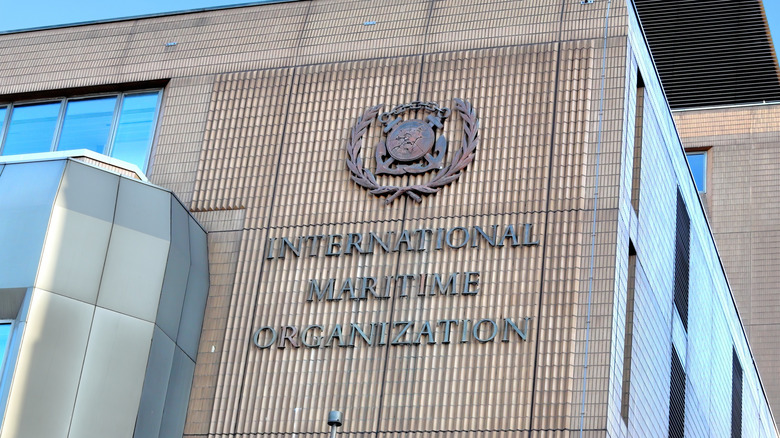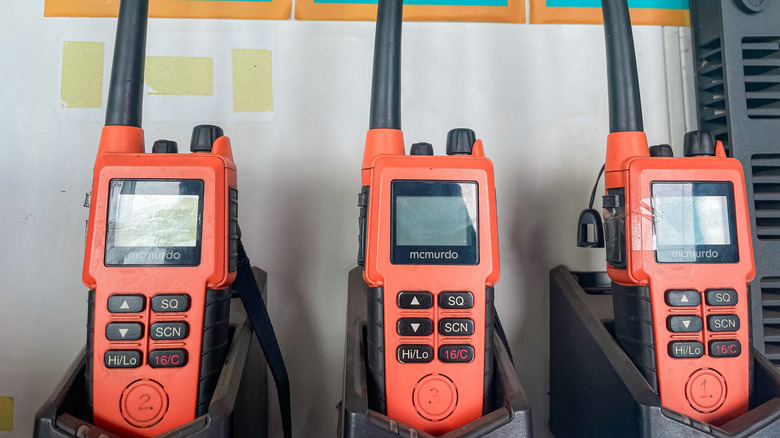What Is A Ship's GMDSS And How Does It Work?
The scary thing about being a mariner, whether it's civilian or military, is that your job requires you to be quite literally out in the middle of nowhere for hours or days at a time. If you experience some manner of emergency on land, then it's usually easy enough to signal for help one way or another. Out on the open sea, though, there's absolutely nothing for miles around, and you may not have the right sea-worthy gadgets to call for help, let alone something as simple as cell service. If you, your crew, or your vessel are in danger, the odds of someone being nearby to provide aid are virtually zero.
This is why the world's maritime nations, coordinated via the International Maritime Organization, make use of the Global Maritime Distress and Safety System. This specialized communication network utilizes a combination of radio and satellite communication to link every single vessel out on the open water, creating an invisible web of safety lines that help to ensure nobody goes missing at sea. This system has been in use for decades and remains one of the most vital components of safe sea travel well into the modern day.
The GMDSS was originally conceived in the late 70s
Radio communication and transmissions as we know them were originally invented in 1895 by Italian engineer Guglielmo Marconi, one of the most famous engineers the world has ever known. Radio was a brand-new concept at the time, and nobody had any idea what it could be useful for, nor particular interest in finding out. As it happened, though, radio proved exceptionally useful just a few years later in 1899 when a freighter off the southeast coast of England rammed a lightship. By chance, it was within range of one of the first wireless relay stations at South Foreland, allowing it to send a distress signal, resulting in the crew's successful rescue.
In subsequent decades, wireless relays became standard issue on seafaring vessels the world over, allowing them to call for help when necessary. The drawback to this system, however, was that the radio only worked when it was within range of another vessel or a relay station. In the 1960s, the International Maritime Organization began researching the addition of satellite uplinks to the existing distress call framework. By the mid-to-late 1970s, development had officially begun on a hybrid radio and satellite system, the original Global Maritime Distress and Safety System. By 1988, all member nations of the IMO were required to fit their seafaring vessels with GMDSS systems, and by 1992, the systems were formally added to the necessary safety precautions outlined by the International Convention for the Safety of Life at Sea, or SOLAS.
GMDSS uses radio and satellite communication to coordinate rescues
Through both radio and satellite uplink systems, the Global Maritime Distress and Safety System allows vessels in distress to quickly link with both nearby ships and relay stations on shore to communicate situations and coordinate swift, thorough rescues. All ships with a gross tonnage over 300, such as massive military vessels and the largest yachts that are associated with member nations of the IMO, are required to have the necessary equipment for this system aboard. Smaller, civilian vessels aren't technically required to have the system aboard, though it certainly wouldn't hurt.
A GMDSS-compliant ship is equipped with a satellite emergency position-indicating radiobeacon. When a ship sends out a distress signal via radio or satellite, nearby ships with receivers and shore-based Rescue Coordination Centers will receive the call, along with positional data from the distressed ship's beacon. Anyone who receives the call is obligated to respond and participate in the rescue coordination effort, as well as pass the information on to any relevant centers on shore.
Thanks to GMDSS, the vast majority of ships at sea are never truly alone, with their positions marked on a satellite map and assistance never more than a quick call away.


